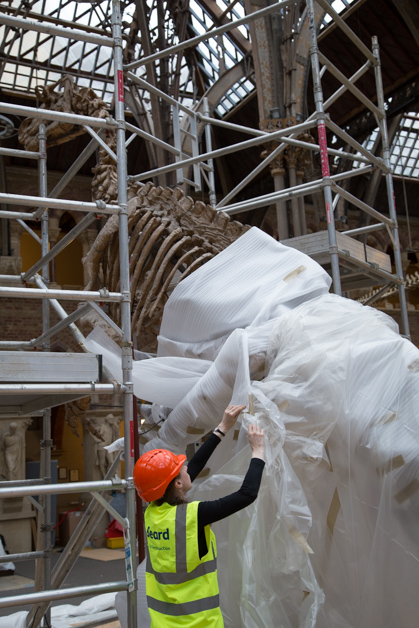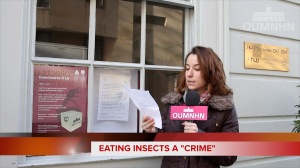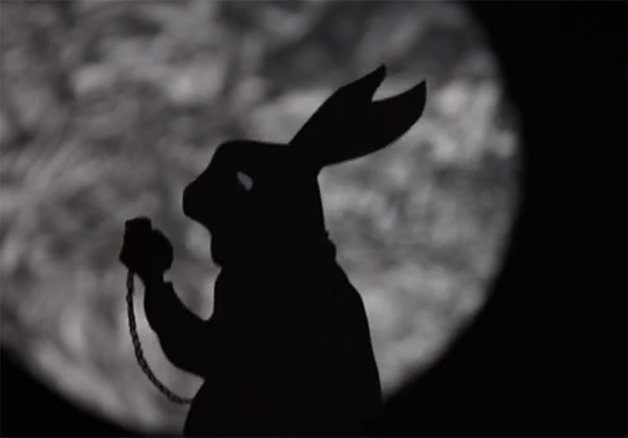Missing tales from behind the scenes in the Museum of Natural History? Yearning for photos and stories of our fabulous collections? Just want to know what we’ve been up to lately? We’re no longer darkened, but we’re as busy as ever and you can now follow our new blog More than a Dodo. You won’t miss a thing.
Stepping out of the shadows

Standing in a museum flooded with natural light and buzzing with people, it’s impossible to say that we’re now darkened or dormant. The Museum has been open for one week and we’ve had almost 30,000 people flooding through the doors. So now is the time to put Darkened not Dormant to bed and to reflect on the year gone by.

Aardvark ready for storage
Credit: Mike Peckett
Back in January 2013, the Museum filled up with scaffolding as work began restoring our fabulous roof. The collections needed protecting, so bizarre scenes of wrapped skeletons and bagged-up taxidermy popped up in the galleries. That’s when the inspiration came to document and share our year of closure through this blog.
The scaffolding towers allowed the construction team to reach the glass roof, but it also gave us all a unique close-up of the Victorian craftsmanship. Staff were lucky enough to go on a tour high up into the roof and we all marvelled at the detail in every strut, screw and spandrel.

Steve and Debbie Moorwood with the graffiti
The greatest discovery came in April 2013 when silver paint was found scrawled on a wooden beam. The words read “This roof was painted by G.Thicke and J.Randall, April 1864”. Our curiosity was piqued, then satisfied when we were contacted by a relative of George Thicke, who had read our blog post and started digging in family records. A highlight of the year for me was joining Thicke’s great great great grandson Steve Moorwood and his wife Debbie to see their ancestor’s handiwork up in the roof.

The van at Cornbury Park
But we haven’t spent the year hanging about in the Museum waiting for the roof to be finished. Our flamboyant van has been out and about taking specimens and staff to festivals, schools and other museums around the country. Our weekly ‘What’s on the Van?‘ posts have given the expert stories behind the specimens that decorate its bodywork; from Stan the T rex to Darwin’s dung beetle.
Even museum specimens escaped the Museum’s darkened galleries and set up temporary homes in Oxford city centre.
 The Natural Histories exhibition created in collaboration with the Museum of the History of Science gave visitors the chance to see some of the treasures of our collection while our doors were closed.
The Natural Histories exhibition created in collaboration with the Museum of the History of Science gave visitors the chance to see some of the treasures of our collection while our doors were closed.
 If you popped into the bank, the fishmongers or the bookshop at the end of 2013, you may have spotted a bank vole, penguin or bookworm looking a little out of place. Goes to Town was a six-month display of museum specimens in Oxford, with an online trail to track down all 12 and find out a little more about them. After a dramatic breakout, they’ve all made it back to the Museum and can now be seen in more familiar surroundings.
If you popped into the bank, the fishmongers or the bookshop at the end of 2013, you may have spotted a bank vole, penguin or bookworm looking a little out of place. Goes to Town was a six-month display of museum specimens in Oxford, with an online trail to track down all 12 and find out a little more about them. After a dramatic breakout, they’ve all made it back to the Museum and can now be seen in more familiar surroundings.
Although we certainly haven’t been dormant while the Museum’s been closed, it has been dark. So it is all the more satisfying to see how successful the restoration project has been at bringing light back into the Museum.

Credit: Mike Peckett
Neil Hyatt, the Project Manager for Oxford University Estates Services, looks back fondly on 14 months of hard work; “Whilst the project has been a complex one to get my head around – the logistics of scaffolding out such a huge space, keeping the interior protected from the heavens opening when the glass was out, the sequence of removal, clean and replacement, the ongoing museum conservation work in the same space, the iron, timber and stone cleaning – it has been a pleasure and delight to work on. Having become so dull and lifeless as the glass got progressively dirty and obscured, the roof now shines with a radiance not seen since it was first constructed.”
Goodbye Darkened not Dormant, it’s been quite a year. Hello again bright and bustling Museum.
Rachel Parle, Interpretation and Education Officer
And we’re back!
Image

Just a very quick post to say that today has been amazing. Thanks very much to all our visitors – it has been wonderful to have so many people back in the court – and also to our musical entertainers, The Alternotives and The Knights of Mentis who provided a real party atmosphere.
Time for a beer and rest. If you didn’t make it today, then hopefully see you soon.
See the light…
Image

In just over twelve hours’ time we’re back. Join us from 7am for breakfast, bugs, bands and an enormous sense of relief.
Photo: Rob Gregg
By the light of the Moon
We recently brought you the breaking news that the animals on our Goes to Town trail had escaped from their cases and were planning to return here to reopen the Museum on Saturday 15 February.
We can now reveal that these creatures have been sighted, skulking by the light of the Moon, and making their final preparations for this reopening party. It seems that the Museum will be Darkened no longer, and most certainly not Dormant.
See you there…
Bye-bye buckets

Les Smith and Stuart Knapp wave goodbye to the buckets
It’s raining. In the past, the sound of rain on the Museum’s glass roof would have our Front of House staff rushing for buckets. The Victorian structure is beautiful, impressive, airy… and challenging.

Les Smith reaches for the last container
When the Museum opened in 1860, the architecture was right at the cutting edge, and the unique combination of medieval-inspired arches and carvings sitting alongside the soaring glass and iron roof has even been described as Techno-Gothic. Pioneering projects aren’t always perfect and unfortunately the Museum’s roof has leaked since its creation over 150 years ago. Last year’s roof restoration project was driven by the need to keep the rain out, and now every glass tile is sealed with 21st century technology.
Today the leaks are gone and the Museum is dry. The collection of buckets, boxes and all manner of containers has been removed from the tops of cases and the Front of House stash of buckets has gone. Now we can relax and enjoy the sound of the rain, without worrying if the specimens are getting damp!
Rachel Parle, Interpretation and Education Officer
Rex in a box

Credit: Nicola Fielding
We couldn’t just tease you with last week’s shot of the Iguanodon being unwrapped. The sight of our enormous dinosaurs being liberated from the foam, tape and chip board which has encased them for the past year is too good not to share.

Credit: Mike Peckett
Each time I look out into the Museum court, another specimen has been revealed. The elephants are back, the camel is looking great and the giraffe is next on the list. But the biggest impact over the last couple of weeks has to be the large dinosaurs regaining dominance in the centre of the Museum.
The T rex and Iguanodon skeletons are far too huge to move… and wouldn’t even get out of the front door! So they had their own bespoke wooden boxes built for them, which protected them from damage and dust during the roof restoration project.
But with just 3 weeks until our re-opening, the boxes are down and the foam wrapping has been discarded. Here are a few of my favourite shots of the return of the dinosaurs.

T rex being revealed
Credit: Nicola Fielding

Credit: Nicola Fielding

The Iguanodon’s tail escapes its box

Credit: Scott Billings
Our dinosaurs are ready and waiting for the visitors to return on Saturday 15th February. We all hope to see you then!
Rachel Parle, Interpretation and Education Officer
Breakout!
I bring you breaking news from the Museum of Natural History. As you all know, the Museum has been closed for over a year and, during that time, a number of our specimens have been popping up in unlikely places around Oxford city centre.
The Goes to Town project has seen a penguin in the fish mongers, a bank vole in the bank and a book worm in a book shop. All was going swimmingly until today.
 We’ve been receiving reports from several of our Goes to Town venues that there’s been a breakout. The snowy owl has vanished from the University Church, the edible insects have escaped from the Turl St Kitchen and a white rabbit is on the loose from the Central Library. There’s trouble afoot.
We’ve been receiving reports from several of our Goes to Town venues that there’s been a breakout. The snowy owl has vanished from the University Church, the edible insects have escaped from the Turl St Kitchen and a white rabbit is on the loose from the Central Library. There’s trouble afoot.
We’ve put together a special bulletin of Oxford University Museum of Natural History News.

Scott Billings at the University Church
Reporters Bethany Palumbo, Jess Suess and Scott Billings joined me to bring you the latest story direct from the scene.
The mystery has been give an even more intriguing twist by the appearance of letters left behind by the escaped specimens. Each creature has its own motive for abandoning its case, but there is a definite theme throughout; they’re all coming home!

A note left behind by the white rabbit, Oxford Central Library

Bethany Palumbo at Turl St Kitchen
As each report unfolds, it’s clear that the specimens have escaped in order to return to the Museum, ready for our re-opening on Saturday 15th February.
So, who is behind this mass escape? Watch the report video to find out.

Jessica Suess at Oxford Central Library
The Museum of Natural History will be the place to be on Saturday 15th February. Even the Goes to Town specimens don’t want to miss out on the action! Join us then, dawn till dusk.
Rachel Parle, Interpretation and Education Officer



